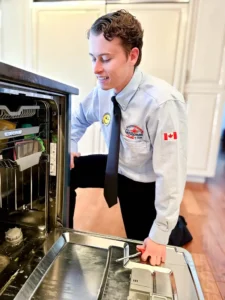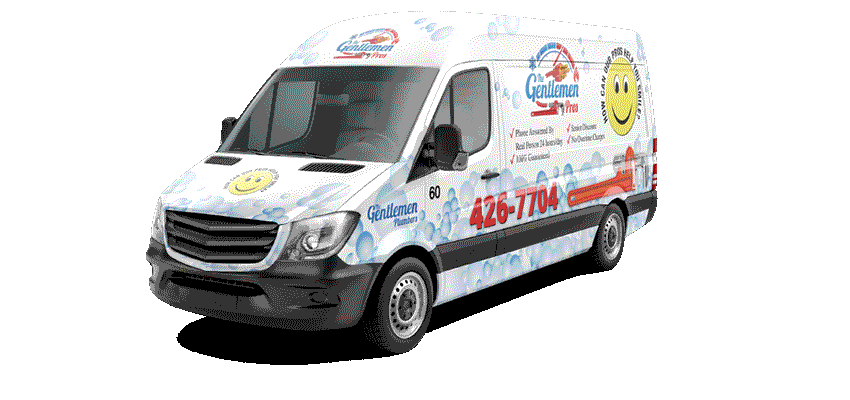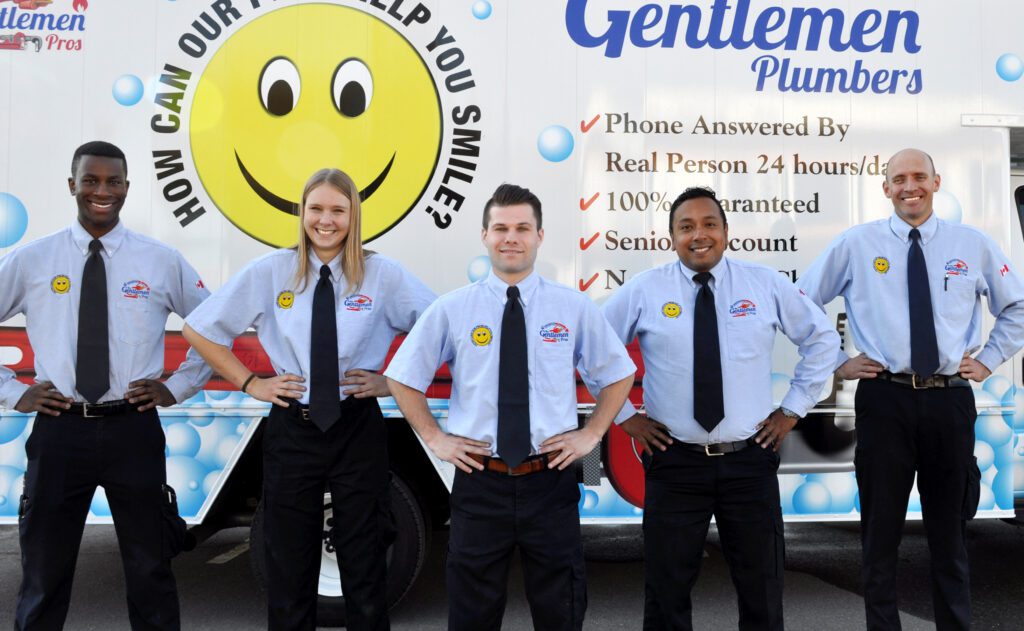We're In Your Neighborhood!

Same Day Service
Since 1992
Call The Gentleman Pros Now!
(403) 754-6648
We're In Your Neighborhood!


Same Day Service
Since 1992
Call The Gentleman Pros Now!
(403) 754-6648

Need help installing your dishwasher? We got you! All of our appliance installations are backed by a warranty. Don’t risk water damage in your kitchen or waste hours trying to DIY. Call us for a fast and efficient installation that you don’t have to worry about.
“Excellent Service from dispatch. Also, Technician. Richard E. Also appreciated all information I received and look forward to getting electrical inspection and furnace. One stop shop…Yeah!!” Bev H

A conventional septic system consists of two main components: the septic tank and the drainfield. The septic tank is also known as a Home Sewer Tank, a Sanitation Tank, a Septic Pit, or a Septic Reservoir. It is a sealed container made of concrete, fiberglass, plastic, or metal and is buried in the ground. It receives all wastewater from a house, including water from dishwashers, showers, toilets, washing machines, and other plumbing fixtures.
Septic tanks are commonly used in remote or rural areas where there is no municipal sewer system available. Their lifespan is typically between 20 to 30 years. Septic tanks have two chambers divided by a separation baffle, and their main purpose is to provide a temporary holding storage location for all wastewater from a house. They are buried in the ground below the frost line, commonly with 600mm to 3,000mm of earth covering them. An access cap or inspection pipe is usually located shallower than that for convenience. Septic tanks are best installed at least 3,050mm from the foundation of a home.
When wastewater enters the tank through the inlet, the flow rate slows down, and the heavier solid materials start to settle to the bottom of the tank and separate from the lighter solid materials that float towards the top of the tank. Heavier solid materials, such as bones, fecal matter, food particles, grit, non-organic substances, and soil, sink to the bottom of the septic tank, forming a flat, thick layer called the sludge layer. A healthy sludge layer is typically between 50mm to 200mm in depth and uses bacteria that do not require oxygen to decompose the materials, known as anaerobic bacteria. Lighter solid materials, such as grease, fats, oils, soaps, and toilet paper, float to the top of the septic tank, forming a thinner layer called the scum layer. A healthy scum layer is typically between 100mm to 400mm in depth and uses bacteria that require oxygen to decompose the materials, known as aerobic bacteria.
The remaining wastewater and other liquids between the scum layer at the top and the sludge layer at the bottom is the effluent. This effluent finds its way into the second chamber of the septic tank through a baffle and is then ready to be pumped out to the drainfield. The scum and sludge layers continue to breakdown inside the septic tank and, therefore, require measuring/monitoring on a regular annual basis or bi-annually at a minimum. If too many non-organic compounds accumulate in the sludge layer at the bottom of a septic tank, then this layer will not break down and can grow too thick (up to 350mm) and will need to be removed as soon as possible. Alternatively, if a septic tank does not have those layers developing at all, then there is also a problem. As a rule of thumb, the scum and sludge layers should not combine to be more than 30% of the entire septic tank’s volume.
For assistance with installing a new septic tank or repairing/servicing an existing septic tank, you can contact The Gentlemen Pros.
The second component is the Drainfield – also known as an Absorption Field, septic field, Leaching Bed, or Tile Field. No matter the label, the drainfield is a shallow grid system of underground pipes that have little holes punched in them and use the soil that surrounds them as a final treatment method for the effluent.
The best place to excavate for a drainfield is on level ground where the earth or soil is not saturated and does not have low spots or sinkholes. The pipes put into this type of ground are referred to as distribution pipes, and they allow the treated effluent to slowly drain into the soil. These distribution pipes are mostly made of PVC material, which is white in color and easy to drill with holes.
To maximize the trickle of treated effluent, these distribution pipes can be embedded in loose gravel and even covered with plastic septic chambers. These perforated white PVC distribution pipes can also be placed in a trench with gravel, rubber chips, sand, or other similar material that is labeled as Aggregate. The normal depth of such aggregate material ranges from 15mm to 100mm.
These trenches are set at a standard depth of 915mm underground, and the distribution pipes within them are commonly between 450mm to 915mm in width with a length as required to connect to other distribution pipes in their network. Under normal conditions and routine care, a drainfield can last up to 50 years or more.
Some typical warning signs of a failing drainfield to watch out for are bad odors around the drainfield or septic tank, bright green and soft lush grass over the drainfield or septic tank during a drought or unseasonably dry weather, gurgling sounds coming from the plumbing system outside the home, and standing water or consistent damp spots near the drainfield or septic tank.
In terms of “winterizing” or preventing your septic system from freezing, some good recommendations include:



